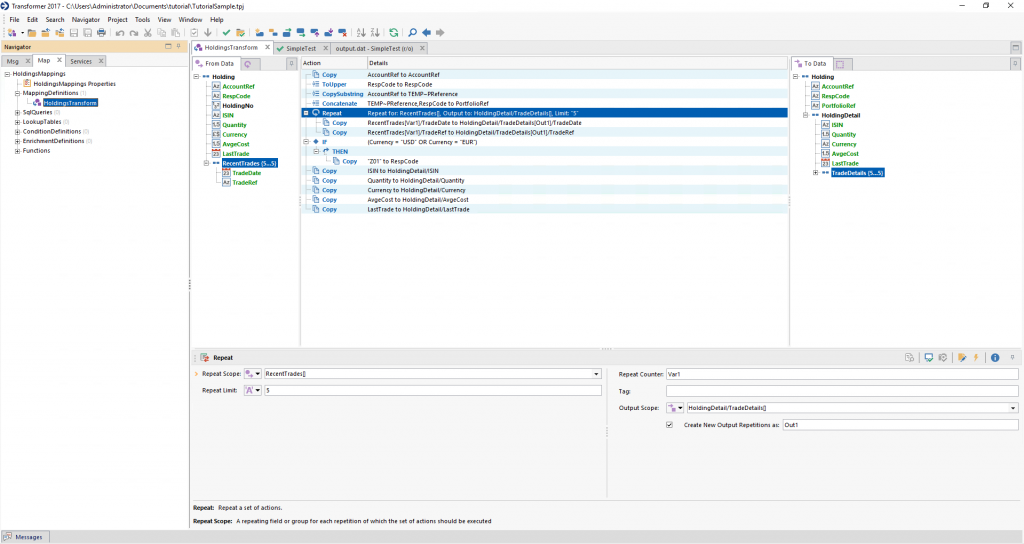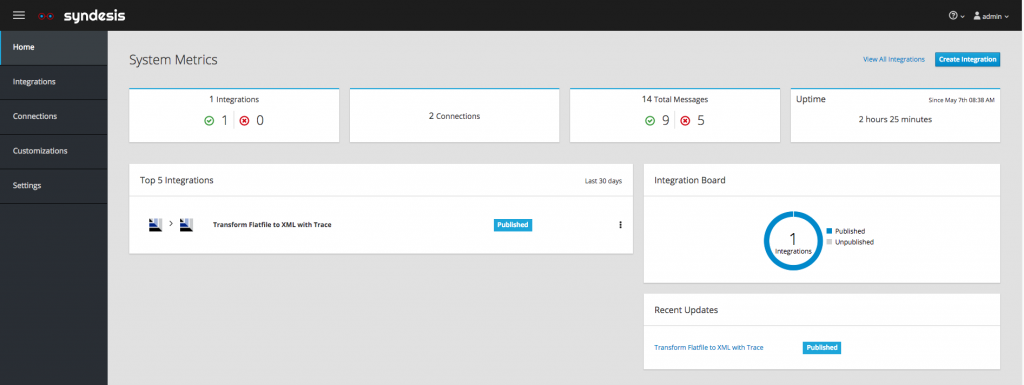As part of Red Hat JBoss Fuse 7, Red Hat introduces a new Integration Platform as a Service (iPaaS) called Fuse Ignite. Gartner uses the term citizen integrators to describe the iPaaS target market: folks who aren't regularly concerned with integration. In my opinion, this market includes Electronic Data Interchange (EDI) analysts who focus on business rules and validations, rather than worrying about lines of code or Apache Camel routes. Therefore, Fuse Ignite introduces a mechanism to separate concerns, allowing EDI analysts to focus on their business mappings and transformations. On the other hand, developers can focus on low-level integration with systems and on writing code. Fuse Ignite offers a platform on which both citizen integrators and developers can coexist, collaborate, and contribute to an end-to-end integration.
Trace Transformer
Java has a bad record for transforming the complex textual formats and standards we find in EDI. Although Apache Camel helps somewhat with basic transformation, it will never be able to handle complex EDI standards by itself. Therefore, my recommendation is to use EDI tooling from our partner, Trace. Any EDI analyst can learn Trace's sophisticated drag-and-drop tool, Transformer, which offers support for any EDI standard imaginable.

In the past, Trace exported EDI mappings as an OSGi bundle, easily deployable to JBoss Fuse and interoperable with Camel. But with the advent of Spring Boot and Red Hat OpenShift, what is the best path forward? The answer is Fuse Ignite!
Fuse Ignite
Fuse Ignite is simply a citizen integrator–friendly interface for contributing to integration flows. Whether it's connecting to a complicated Salesforce API or publishing to a JMS queue or topic, Fuse Ignite allows citizen integrators to create their own integration flow. With Trace Transformer, they now have the ability to write, maintain, and operate their complex EDI transformations without worrying about writing a single Camel route. This mechanism, called a step extension, gives developers the ability to add their own custom steps, which citizen integrators can include in their integrations. We now have a simple-to-use web interface for creating, monitoring, and operating integrations. And, of course, it's built on OpenShift to take care of how our integrations are deployed at scale.

I've created a sample project in GitHub that demonstrates the use of Trace Transformer with Fuse Ignite. Also, click below to watch my video demonstration of Fuse Ignite with the Trace Transformer step extension.

